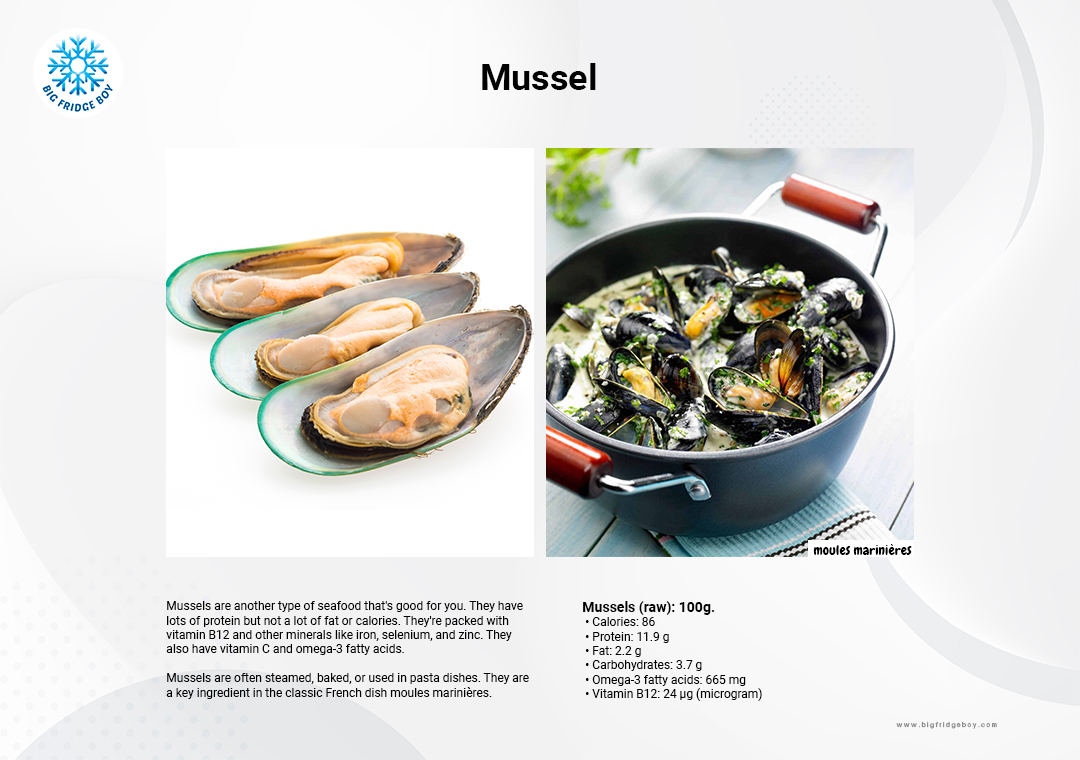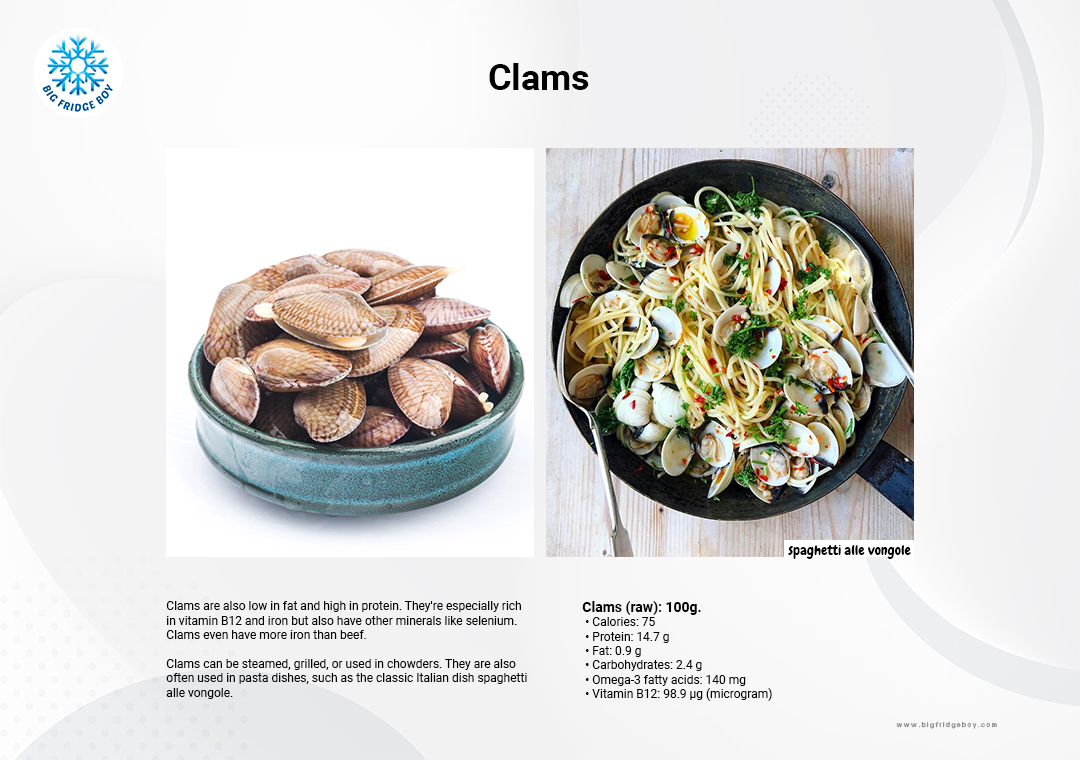"Nutritional Richness of Scallops, Mussels, and Clams"
Last updated: 23 May 2023 | 10787 Views |

Eating seafood, particularly mollusks like scallops, mussels, and clams, introduces a range of important nutrients to your diet, which includes high-quality protein, healthy omega-3 fatty acids, vitamins, and minerals. These nutrients contribute to the optimal functioning of your body, including heart health, brain function, and immunity.
For instance, the vitamin B12 found in abundance in these mollusks is crucial for nerve function and the creation of red blood cells. The omega-3 fatty acids are renowned for their role in heart health, reducing inflammation, and aiding brain development. Minerals like iron, zinc, and selenium contribute to a well-functioning immune system and metabolic processes.
scallops, mussels, and clams are types of bivalves. Bivalves are a class of marine and freshwater mollusks that have bodies enclosed by a shell consisting of two hinged parts. They are named for these "bi-valve" shells, and other members of this class include oysters and cockles. They are all filter feeders and play important roles in their ecosystems by filtering water and removing impurities.

Scallops/Hotate
These are a family of saltwater bivalves known as Pectinidae. Scallops are unique in that they can swim short distances by quickly clamping their shells together, which pushes out a jet of water and propels them through the water. They are often served as a seafood dish, with the adductor muscle (the muscle that controls the shell) being the most commonly eaten part. They have a sweet, delicate flavor.
Hotate is the Japanese term for scallops, specifically the species ‘Mizuhopecten yessoensis’ or the ‘Yesso scallop’, which is found in the northwest Pacific Ocean. "Hotate" is often used in sushi and sashimi or can be grilled, and it is prized for its sweet flavor and tender texture.
Scallops and Hotate are a type of seafood that's low in fat and high in protein. They have a lot of vitamin B12 and minerals like phosphorus, magnesium, and potassium. They also have omega-3 fatty acids, which are good for your heart.
Scallops/Hotate (raw): 100g.
- Calories: 88
- Protein: 16.8 g
- Fat: 0.8 g
- Carbohydrates: 2.5 g
- Omega-3 fatty acids: 310 mg
- Vitamin B12: 1.2 µg (microgram)
Scallops are often pan-seared, grilled, or used in stir-fries. In Japanese cuisine, Hotate might be served raw as sashimi or sushi.

Mussel
This is a common name used for several types of bivalve mollusks belonging to several families, like Mytilidae (marine mussels) or Unionidae (freshwater mussels). Unlike scallops, mussels are generally stationary and often attach themselves to stable surfaces using their byssal threads. Mussels can be found in both saltwater and freshwater habitats. The whole interior of the mussel is often consumed, and it has a strong, distinctive flavor.
Mussels are another type of seafood that's good for you. They have lots of protein but not a lot of fat or calories. They're packed with vitamin B12 and other minerals like iron, selenium, and zinc. They also have vitamin C and omega-3 fatty acids.
Mussels (raw): 100g.
- Calories: 86
- Protein: 11.9 g
- Fat: 2.2 g
- Carbohydrates: 3.7 g
- Omega-3 fatty acids: 665 mg
- Vitamin B12: 24 µg (microgram)
Mussels are often steamed, baked, or used in pasta dishes. They are a key ingredient in the classic French dish moules marinières.

Clams
This is a common name for several types of bivalve mollusks. The term "clam" can refer to a wide variety of bivalves, and usage of the term varies by region. For example, in the United States, "clam" often refers to small, edible bivalves, while in the UK, it is often used to refer to all types of bivalves. Some clams burrow into the substrate in the environment in which they live. The whole interior of the clams, like the mussel, is often consumed.
Clams are also low in fat and high in protein. They're especially rich in vitamin B12 and iron but also have other minerals like selenium. Clams even have more iron than beef.
Clams (raw): 100g.
- Calories: 75
- Protein: 14.7 g
- Fat: 0.9 g
- Carbohydrates: 2.4 g
- Omega-3 fatty acids: 140 mg
- Vitamin B12: 98.9 µg (microgram)
Clams can be steamed, grilled, or used in chowders. They are also often used in pasta dishes, such as the classic Italian dish spaghetti alle vongole.
All these seafood are good for you because they're high in protein, low in fat, and have lots of vitamins and minerals. The vitamin and mineral content is much more extensive than listed above. All of these seafood options are rich in other minerals such as selenium, zinc, copper, and iron, and vitamins like vitamin A, vitamin E, and several B vitamins. They are also a good source of high-quality protein.







